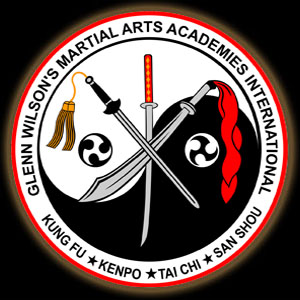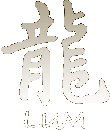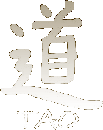



Pai
Lum Tao History
Bok Leen Pai Kenpo
History Selection
A
Deeper Look
White
Lotus Style Kenpo History
'Bok Leen Pai Kenpo History'
In early 500 BC Bodhidharma traveled to China to the kingdom of Wei where he met with emperor Wu of the Liang dynasty. For Bodhidharma the meeting was to no purpose; his words to the worldly emperor meant nothing. Disappointed, Bodhidharma left the palace of the emperor and traveled to the Honan province where he traveled to the Shaolin temple to continue teaching.
Bodhidharmas' depression grew once he reached the famed Shaolin temple, for Prajnatra's story was true. The monks were in a ragged condition and were physically and mentally unfit due to the large amounts of time the monks spent in meditation and doing little else. Many of the monks would fall asleep in meditation while others needed assistance in the basic necessities of life - so feeble was their condition.
For an unknown period of time Bodhidharma meditated in a cave at the outer reaches of the temple seeking for a way to renew the spirit of Buddhist teaching. Upon his return Bodhidharma began training the monks in the courtyard. From the physically powerful to the frail he started to enlighten and train with them in the art of Shih Pa Lo Han Sho, or the 18 hands of Lo Han. These techniques were never originally intended for fighting but were a manner in which the monks could attain clarification while developing their bodies' health.
During the Sui period bandits assaulted the Shaolin monastery; this would become one of many attacks that would occur until the early twentieth century. During this first invasion, the monks attempts at defending their temple were futile, their skills were not accustomed to war techniques and it looked as if the temple would fall. A monk of the temple known only as the "begging monk" attacked several of the outlaws with an array of aggressive hand and foot techniques, killing and injuring some and driving the remaining attackers away. The other monks were so inspired by the display of this single monk that they requested tutelage in this martial style as a means of protection. In scripts this combating art was recorded as Chuan Fa or Fist Method. Chuan Fa translated into Japanese is Kempo, or in English is "Fighting Methods" or "Fighting Laws." This is the basis of most of the Asian Martial Arts in the world today.
Over several generations the warfare arts of the Shaolin temple grew into hundreds of styles in all over the next several centuries. A master of Chuan Fa called Ch'ueh Taun Shang-jen was said to have rediscovered the original Shih Pa Lo Han Sho which had been lost for many years. Ch'ueh integrated his art of Chuan Fa with that of the Lo Han styles increasing his total number of techniques from the original eighteen to total of seventy-two. Ch'ueh would promote his newfound style by traveling the country side of China fighting in matches until he encountered Chuan Fa master named Li in the province of Shensi. Li, developed his curriculum of Chuan Fa to that of one-hundred and seventy techniques. These moves were categorized into five unique groups renowned by an assortment of animals. Upon the return to the Shaolin temple of which both Ch'ueh and Li belonged they presented to the other monks the five animal forms - wu xing quan. These forms introduced to the Shaolin temple a new juncture in martial arts development.
Over the next several centuries the history of Chuan Fa and its advent to Kempo is ragged in its tales and difficult to gain accurate descriptions. What is known is that the art of Chuan Fa remained and is still practiced in China, but its teaching also found its way to Japan, the Okinawa Islands as well as the Ryukyu kingdoms. Throughout these islands, the art of Chuan Fa was referred to as Kempo or Law of the fist.
For many centuries it is contemplation that many traveling monks ventured across Japan and Okinawa bringing with them a working knowledge of the art of Kempo. The art would have been taught as a enhancement to the daily spiritual training the monks endured. It is believed that some of the monks would teach at various Buddhist temples bringing forth the word of Buddha, and the power of Kempo to other monks. This would eventually spread to the surrounding villages.
It is generally believed that the Chinese systems of Chuan Fa not only reached the shores of the Ryukyu Islands and became known as Kempo but spread throughout all of Asia to include martial arts influences in Korea, Thailand, Viet Nam, Singapore, Philippines and many other countries.
It is believed that many Japanese and Okinawians made trips to various areas in China for the purpose of learning the mythical art of Chuan Fa. Some people would disappear for many years and then resurface as a master of Kempo and other martial arts. One such traveler was Sakugawa. Master Sakugawa traveled from Shuri, Okinawa to China during the 18th century to learn the secrets of Chuan Fa. He had become a master of respected position in China and throughout his home country of Okinawa. After many years of modification the martial art Sakugawa had learned eventually was renamed to Shuri-te. This art is considered to be the direct ancestor to many forms of today's modern Karate.
It is generally believed that Master Sakugawa on his return in 1784 to Okinawa brought with him a Chinese companion named Kushanku. Both men brought with them the art of Chuan Fa which they had studied together in China. They immediately began to demonstrate and teach their arts around their home of Okinawa. It is believed that Kushaku and Shionja had a great influence on the Okinawian Kempo martial arts styles of today.
During the reign of Hideyoshi Toyotomi's in Japan there were great plans of conquering mother China. It is commonly believed that many a Samurai Soldier returned from China with extensive knowledge of Chuan Fa and throughout the years modified it to include their own arts of combative arts of Jiu-Jitsu and Aikijutsu. The next great conversion of traditional Chuan Fa from China to Japan would be via a Japanese agent in the mid 1900s by the name of Do Shin So. His art of Shorinji Kempo would grow with great popularity in Japan. Shorinji Kempo would focus on the spiritual aspects as well as the martial art. This is something that Do Shin So believed that the new generations were in great need of. His predictions were right and now his style has become one of the most popular in the world.
Many styles of Kempo and Chuan Fa would find there way to the islands of Hawaii from the late 1800s to the mid 1900s. One of the best known would be the Kosho Ryu Kempo of Masayoshi Mitose. He was born in Hawaii and it is said that he would travel to his family's home area of the Mt. Akenkai's Shaka-In temple near the town of Kinkai, Nagasaki on the island of Kyushu. This is believed to be where the Kosho sect of the Yoshida clan taught.
Hawaii would be commonly known as the location and cradle for the modern development of Kempo, also known today as Kenpo! Many of today's top combative styles and renowned masters would emerge from these Islands as would their training descendants throughout North and Central America. The great state of Hawaii would produce some of the world's foremost pioneers of modern martial arts. A few of those names who are honored with bringing Kempo/Kenpo to the mainland United States are James Masayoshi Mitose - Kosho Ryu Kempo, William Kwai Sun Chow - Kara Ho Kempo, Daniel Kalimaahaae Pai - Bok Leen Pai Kenpo, Edmund Kealoha Parker American Kenpo, Adriano Directo Emporado - Kajukenbo Kenpo, Ralph Castro - Shaolin Kempo, Al Dacoscos - Won Hop Kuen Do and Paul Yamaguchi - Kempo Jiu Jitsu.
Great Grand Master Daniel Kane Pai's grandfather, Po Fong, left his home near a southern Shaolin Temple outside of Singapore and traveled to Hawaii in 1924 with the dream of being able to give his family a better life by using his vast martial arts knowledge. Po Fong later adopted a Hawaiian name, Po Pai. Kane Pai, the son of Po Pai, was one of six children and had a son, Daniel Kane Pai, born in Kamuela, Hawaii. Grandmaster - Po Pai taught his grandson the family martial art style which contained mainly elements of the crane and dragon movements as well as other animal styles which were later contained within a larger martial arts system called Pai Lum Tao. His grandmother was a master of the white crane system and his father was a Judo expert. During this time of training, Po Pai sent his grandson to the White Lotus Monastery, Byakurenji, in Okinawa, Ryukyu Islands, to study Kobayashi-ryu karate-do, White Lotus Kenpo and he received his black belt at that time.
At the end of World War II, Daniel Pai went to work on the Parker Ranch on the "Big Island" herding cattle. During this time, Daniel Pai and Ed Parker, who would become a famous kenpo master, worked and trained together at the ranch. Pai studied the art of Judo/Jujitsu and massage with Professor Osakis and Richard Takamora. The massage and internal training would give further depth to White Lotus Kenpo. He would also study with other members of the Hawaiian Kenpo Association.
In 1951, Daniel Pai joined the U.S. Army and was stationed on the Mainland. He opened his first school in the back of his Sunset Boulevard home just before leaving to fight in the Korean War. He re-enlisted in 1953, and worked early intelligence in Vietnam in 1954. He retired from active duty in December 1955 and in May 1962 he was given an honorable discharge after completing his military obligation. During his service to his country, Daniel Pai was awarded 4 bronze Stars, Korean Service Medal, U.N. Service Medal and the National Defense Medal.
Dr. Daniel Pai graduated from the Chicago Medical College, Calcutta India on June 29, 1960, with a degree in Homeopathic Medicine. He would add his homeopathic medicine knowledge into his Bok Leen Pai Kenpo advanced curriculum.
Throughout the mid-sixties and early seventies, he opened numerous schools in the United States, with instructors in Florida, Texas, Louisiana, Pennsylvania, Tennessee, Connecticut, Colorado, California, Hawaii and Canada. During this time he was operating a school in Daytona Beach and assisting with the operations across the country. This era peaked with fifty plus Pai Lum and Fire Dragon schools operating in North America. These schools would have a unique blend of Hawaiian Kenpo and Chinese Kung Fu. Over the next two decades some of these students, who trained mostly in Kenpo, stayed close to Great Grandmaster Pai as he trained new students in Kung Fu and Tai Chi disciplines. Great Grandmaster Pai's martial arts system became known as the White Dragon or Pai Lum. Dr. Daniel Kane Pai was one of the early innovators in blending the Kung Fu and Kenpo philosophies together in a successful format for all martial artist.
In 1966 after spending 20 years as a merchant marine, Master Jim McIntosh brought a vast knowledge of the Asian martial arts to the United States through a martial art system known as Gong Yuen Chuan Fa, The Way of the Hard and Soft Fist. Training with Master McIntosh was very rough and physically and mentally demanding. Sifu Glenn Wilson was one of only three Sifus produced by Master McIntosh.
In the mid seventies the Gong Yuen Chaun Fa Federation was established to govern the ranking and curriculum taught. Sifu Glenn Wilson was assigned the duties of director by Master Jim McIntosh a merchant marine who trained only a hand full of students in the late sixties and early seventies and has served faithfully ever since. The teachings of Gong Yuen Chaun Fa's foundation includes four systems: Shorinji Kempo, Lo Han - Buddhist Monk Boxing, Plum Flower system and the Five Animal School. The mix would prove to be an unbeatable combination of fighting, empty hand forms and weaponry.
Since Master McIntosh had retired, Sifu Glenn Wilson was sent to meet the world renowned Kung Fu / Kenpo Grandmaster from Hawaii, Daniel Kane Pai. Their friendship was instantaneous. Grandmaster Pai was very impressed with the young Sifu's level of skills and with the awesome style he taught. Sifu Wilson was blown away as he would perform the ancient Chinese forms for Dr. Pai and he would be asked to stop the form about half way through. Then Dr, Pai would finish the forms for him. Wilson has proclaimed many times that he was amazed at the vast knowledge of Dr. Pai and that he was so grateful and honored to be accepted as his direct student.
Grandmaster Pai accepted Sifu Glenn C. Wilson as his student. Sifu Glenn maintained the rank he held in Gong Yuen Chaun Fa and with the Kou Shu Organization in Taiwan that was 3rd higher level. The traditional blend of the two great systems - White Dragon & The Way of the Hard and Soft Fist began.
Sifu Glenn began a life long endeavor to study the disciplines of Bok Leen Pai Kenpo, Pai Te Lung Kung Fu and Pai Yung Tai Chi. At the request of his teacher - Grandmaster Daniel Kane Pai, Sifu Glenn would begin to teach the traditional Lohan and Plum Flower forms to some of the other Pai Lum Tao families. Then in 1979 Sifu Glenn Wilson was elevated to the prestigious rank of Si Gung 'Master' in Bok Leen Pai Kenpo and Pai Te Lung Kung Fu by Grandmaster Pai and the Kou Shu Federation of Taiwan.
Through out the seventies and eighties Sigung Wilson would travel extensively competing in tournaments and competitions and also performing demonstrations. During these years Wilson would win Five world titles and eight national titles in open tournament competitions as well as build a record of 13 - 0 in kickboxing. He would utilize his success and reputation as a fierce competitor to promote Bok Leen Pai Kenpo and Pai Te Lung Kung Fu to the world.
In 1991, Great Grandmaster Daniel Kane Pai was in the process of organizing all his Pai Lum Tao schools with several associated systems under an umbrella organization called the World White Dragon Kung Fu Society. Upon the request of the Great Grandmaster Pai, Si Gung Glenn Wilson was given the honor to oversee the establishing of this organization to protect and preserve the curriculum. This was a project of love for both of them as they worked countless hours together to form this organization and attempt to secure the dreams of Dr. Pai for his life's work. Sigung Wilson was told many times by Dr. Pai that there will be those that will choose to work with you and together for the greater cause of Pai Lum and there will be those that will selfishly keep it to themselves. He would advise Sigung Wilson to watch the gleam of their smile for it may hide that knife at your back. This proved to be very good advise. Dr. Pai directed Sigung Wilson to open the door to all Pai Lum practitioners, but he need do it only once. If they do not show the honor and loyalty to the dreams of 'The Teacher' being Dr. Pai, he need not entertain their efforts any longer.
Great Grandmaster - Dr. Daniel Kane Pai established five families of Pai Lum Tao martial arts. At that time five heads of family were established directly by Dr. Pai to build and maintain their status as legitimate lineage of the teacher. Grandmaster Glenn C. Wilson was named head of family of the Gong Yuen Chuan Fa family of traditional Pai Lum martial arts directly by Great Grandmaster - Dr. Daniel Kane Pai in 1993. Grandmaster Wilson was given all rights to propagate and build his family and to lead and teach Bok Leen Pai Kenpo, Pai Te Lung Kung Fu, Pai Yung Tai Chi, Kwan Yen Chi Kung, Chin Kon Pai Meditaion and Pai Lum Tao San Shou!
In 1993, while in the Dominican Republic, Great Grandmaster Daniel Kane Pai passed from this life and was laid to rest with full military honors at the Hawaiian National Cemetery. A legacy of knowledge and wisdom was left with many devoted practitioners of Pai Lum Tao across several decades. What they choose to do with it is entirely up to them and their heart.
Under the direction of Si Tai Gung Glenn Wilson, a Board of Directors was appointed during 1994 to protect and preserve the curriculum of the Pai Lum Tao family, as Si Tai Gung Glenn Wilson had promised his teacher - Dr. Daniel Kane Pai. During 1994 and 1995 there were a few individuals who would not conform to the by-laws of the World White Dragon Kung Fu Society resulting in a division of the organization. They would undermine and illegally steal the original name given by Glenn Wilson and approved by Dr. Pai. This is something that Wilson and others would have no part in and they ousted the perpetrators' from the original society. Knowing the nature of some of the practitioners from that past that were ousted from Pai Lum by Dr. Pai many years earlier. Wilson had an alternative name and legal organization in reserve. Dr. Pai was right with his quote. "You can't change the nature of the beast, you can only alter it's behavior for a short period of time."
Keeping his promise to his teacher, Grandmaster Glenn C. Wilson keeps alive the dream of Dr. Pai by promoting the White Dragon Warrior Society, Inc. This organization is devoted to protecting and preserving the dream of Great Grandmaster Daniel Kane Pai. Grandmaster Wilson has served this organization with unselfish devotion to insure that each school, teacher and student will train hard to understand the origins and curriculum of Pai Lum Tao martial arts. To maintain the highest standards of ethics, honor, loyalty, respect, tradition and courage. Wilson leads his martial arts family with the philosophy of keeping your order of life in harmony - God, Family (personal & martial arts), country and work!
White Dragon Warrior Society Research Division: 2007